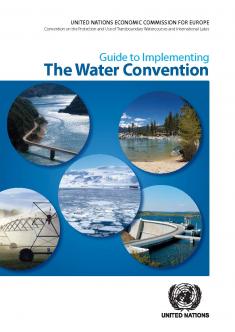Published:

Available in English, French, Russian, Spanish and Arabic
The Convention on the Protection and Use of Transboundary Watercourses and International Lakes (Water Convention) was adopted in 1992 and entered into force in 1996. It brings together almost all countries sharing transboundary waters in the pan-European region, and is expected to achieve broader participation with its global opening to all United Nations Member States.
The Water Convention serves as a mechanism to strengthen international cooperation and national measures for the ecologically sound management and protection of transboundary surface waters and groundwaters. Furthermore, it provides an intergovernmental platform for the day-to-day development and advancement of transboundary cooperation.
The present Guide to Implementing the Water Convention constitutes a commentary to the Convention’s provisions, providing explanations of the legal, procedural, administrative, technical and practical aspects of the Convention’s requirements for appropriate implementation. It aims to strengthen the understanding of the Convention among current and
future Parties, international partners, non governmental organizations and academia.
ECE/MP.WAT/39
The Convention on the Protection and Use of Transboundary Watercourses and International Lakes (Water Convention) was adopted in 1992 and entered into force in 1996. It brings together almost all countries sharing transboundary waters in the pan-European region, and is expected to achieve broader participation with its global opening to all United Nations Member States.
The Water Convention serves as a mechanism to strengthen international cooperation and national measures for the ecologically sound management and protection of transboundary surface waters and groundwaters. Furthermore, it provides an intergovernmental platform for the day-to-day development and advancement of transboundary cooperation.
The present Guide to Implementing the Water Convention constitutes a commentary to the Convention’s provisions, providing explanations of the legal, procedural, administrative, technical and practical aspects of the Convention’s requirements for appropriate implementation. It aims to strengthen the understanding of the Convention among current and
future Parties, international partners, non governmental organizations and academia.
ECE/MP.WAT/39